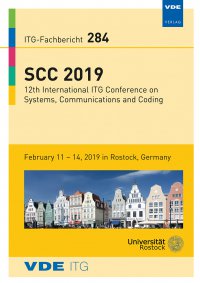High-SNR Analysis of Improper Signaling in the MIMO Broadcast Channel with TIN
Conference: SCC 2019 - 12th International ITG Conference on Systems, Communications and Coding
02/11/2019 - 02/14/2019 at Rostock, Germany
doi:10.30420/454862031
Proceedings: SCC 2019
Pages: 6Language: englishTyp: PDF
Personal VDE Members are entitled to a 10% discount on this title
Authors:
Hellings, Christoph; Weisser, Franz; Utschick, Wolfgang (Professur für Methoden der Signalverarbeitung, Technische Universität München, 80290 Munich, Germany)
Abstract:
In the multiple-input multiple-output (MIMO) broadcast channel with a restriction to transmit strategies that treat interference as noise (TIN), improper signals in combination with widely linear transceivers can bring performance gains compared to proper signals and linear transceivers. However, it has only been shown that there exist scenarios in which these gains can be observed, and it is not yet understood under which circumstances this is the case. As a step towards solving this problem, we present an analysis at high signal-to-noise ratio (SNR) in this paper, and we show that two cases need to be distinguished. In systems with a sufficiently high number of transmit antennas, employing improper signaling can only enlarge the rate region of pure strategies without time-sharing. By contrast, gains due to improper signaling can occur in overloaded systems even if time-sharing is allowed. In addition to the analytical study at high SNR, we provide numerical simulations that demonstrate the implications of our results at finite SNR.


